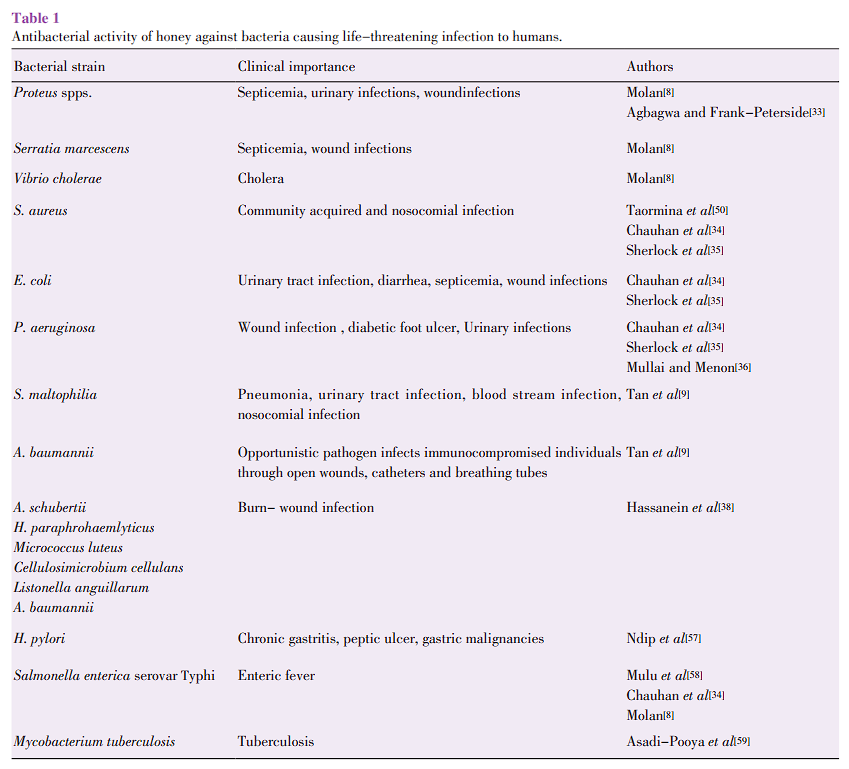SURAH AN NAHL (THE BEE): AYAT 69 (QURAN 16:69)

In this verse – Allah (swt) mentions honey generated from the belly of the bee and the potential benefits (not just nutritious). The medicinal properties is specified via the Arabic word: “Shifa شِفَاءٌ” (meaning healing).
In this review by Mandal et al – The healing property of honey is attributed to the fact that it offers antibacterial activity, maintains a moist wound condition, and its high viscosity helps to provide a protective barrier to prevent infection. Its immunomodulatory property is relevant to wound repair too. The antimicrobial activity in most honeys is due to the enzymatic production of hydrogen peroxide. However, another kind of honey, called non-peroxide honey (viz., manuka honey), displays significant antibacterial effects even when the hydrogen peroxide activity is blocked. Its mechanism may be related to the low pH level of honey and its high sugar content (high osmolarity) that is enough to hinder the growth of microbes. The medical grade honeys have potent in vitro bactericidal activity against antibiotic-resistant bacteria causing several life-threatening infections to humans. Below is a table highlighting some bactericidal effects of honey:

In this review by Almasaudi – the author notes that various components contribute to the antibacterial efficacy of honey: the sugar content; polyphenol compounds; hydrogen peroxide; 1,2-dicarbonyl compounds; and bee defensin-1. All of these elements are present at different concentrations depending on the source of nectar, bee type, and storage. These components work synergistically, allowing honey to be potent against a variety of microorganisms including multidrug resistant bacteria and modulate their resistance to antimicrobial agents. The application of antibiotics with honey yielded better antimicrobial potential and synergistic effects were noted against biofilms. In medicine, honey has been used in the treatment of surface wounds, burns, and inflammation, and has a synergistic effect when applied with antibiotics. Tissue repair is enhanced by the low pH of honey (3.5–4): causing a reduction in protease activity on the wound site, elevating oxygen release from hemoglobin and stimulating fibroblast and macrophage activity.
Furthermore, H2O2 (Hydrogen Peroxide) – which can be enzymatically produced in honey – has antiseptic effects, and it disinfects the wound site and stimulates production of vascular endothelial growth factor. The use of honey will clean wounds or burn areas from free radicals and reduces scarring and contractures. The anti-inflammatory and antibacterial potential of honey will keep the injured area moist and as such prevents it from deterioration and fibrosis. Honey can promote fast healing and reduce scarring and is very convenient for plastic surgery. Skin maceration is protected by honey due to its high osmolarity and because it keeps the injury moist.
In non-infected areas, honey still reduced pain and inflammation. In general, the use of honey in medical settings has reduced economic loss and provided proven economic benefits by lowering direct costs in comparison to conventional treatments and by using less antibiotics, faster healing and less hospitalization stay.
A wealth of both bench and clinical research has been performed on the medicinal effects of honey – particularly in the 20th-21st century. The Quran nearly 1400 years ago highlighted this “Shifa شِفَاءٌ” (meaning healing) associated with honey!
